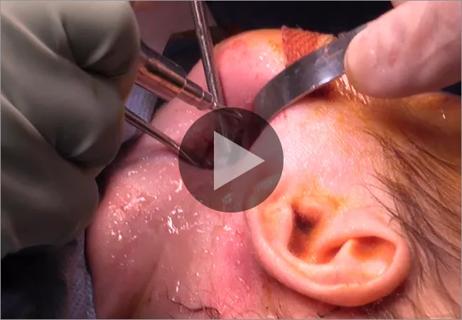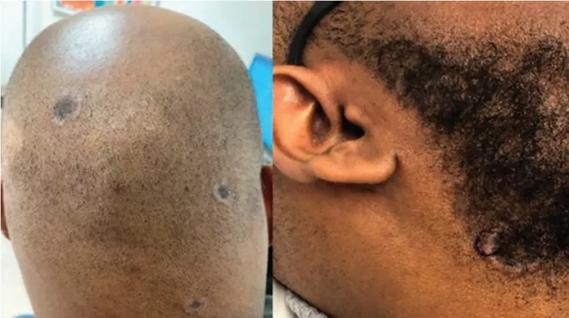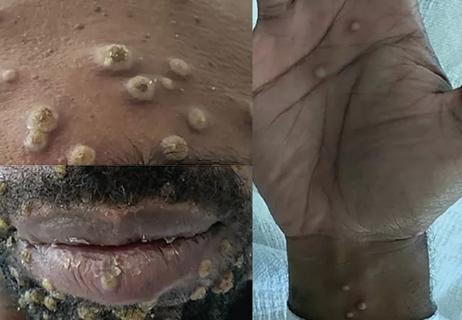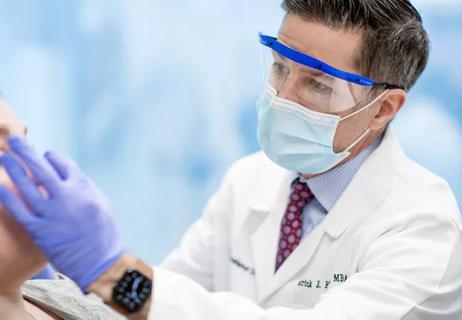Advertisement
Highest level of care at every step

For patients with cleft lip and/or cleft palate, Cleveland Clinic’s Cleft Lip-Palate and Craniofacial Program offers comprehensive treatment programs with a multidisciplinary approach, meeting the unique needs of each individual, no matter how severe the case.
Advertisement
Cleveland Clinic is a non-profit academic medical center. Advertising on our site helps support our mission. We do not endorse non-Cleveland Clinic products or services. Policy
The American Cleft Palate Craniofacial Association-accredited clinic has providers on the team who come from a variety of specialties, including craniofacial plastic surgery, craniofacial orthodontics, pediatric dentistry, pediatric behavioral health, neurosurgery, pediatric sleep medicine, pediatric pulmonary medicine, pediatric neuropsychology, speech language pathology, social work, medical genetics, nasoalveolar molding and maternal-fetal medicine.
What this means for patients and their parents is the highest level of care at every step, from the time of a potential ultrasound diagnosis through every surgery, procedure and dental issue. Having this wide range of specialty providers available in one clinic also eliminates the need for parents to make multiple appointments with different physicians at different facilities on different days. Instead, patients are situated in one room at the clinic and the necessary providers come in and out of the room to see them during a single visit.
“After our team has seen all the patients, we meet and discuss each patient’s case,” says Bahar Bassiri Gharb, MD, PhD, a plastic surgeon who specializes in pediatric and adult craniomaxillofacial surgery at Cleveland Clinic. “We send out a unified letter of recommendation to the families and to their primary care physicians.”
Advertisement
Plastic surgery and treatments for cleft lip-palate and craniofacial anomalies have made big strides in the past decade with an increased attention to detail, delicate repairs using high magnification and the use of extremely fine sutures that are taken out under anesthesia so that scars are almost indiscernible, says Dr. Bassiri. The team uses a combination of nasoalveolar molding and the nasal elevator device for all babies with a complete cleft to help reduce the size of the cleft and the shape of the nose before surgery, which in turn improves surgical outcomes.
The team also performs mandibular distraction in patients with Pierre Robin sequence (a triad of small mandible and retro-positioned tongue with or without cleft palate) who present with severe breathing issues. This technique has revolutionized the treatment of Pierre Robin kids, decreasing the need for tracheostomy. “We recognize the potential for obstructive sleep apnea in these patients. In addition, nearly 25 percent to 30 percent of the children that are born with cleft lip, cleft palate or craniofacial disorders have sleep breathing issues,” notes Dr. Bassiri. “This is why we introduced pediatric sleep and pulmonary medicine in our clinic.”
When children who’ve had cleft lip and palate surgery get older, they may need special dental care and monitoring for malformed, missing or incorrectly positioned teeth from an orthodontist or prosthodontist. The clinic is equipped to meet these needs as well, treating patients from infancy often to young adulthood.
The team uses the newest techniques in the field like virtual surgical planning for orthognathic surgery. During the planning session, all surgery is planned and performed virtually on a computer and custom splints are generated to use during the surgery. This technology has made the surgical planning and outcomes much more predictable.
“We meet many of our patients right after birth and follow them in their care during their growth. It’s a 20-year relationship,” Dr. Bassiri says. “We become part of the family and we believe this therapeutic alliance helps deliver the best care to our patients.”
Advertisement
Advertisement

Study demonstrates TXA’s utility in plastics

Treating micrognathia and OSA in infants

Family history may eclipse sun exposure in some cases

Consider secondary syphilis in the differential of annular lesions

Persistent rectal pain leads to diffuse pustules

Techniques are borrowed from rhinoplasty, malar augmentation and others

Two cases — both tremendously different in their level of complexity — illustrate the core principles of nasal reconstruction